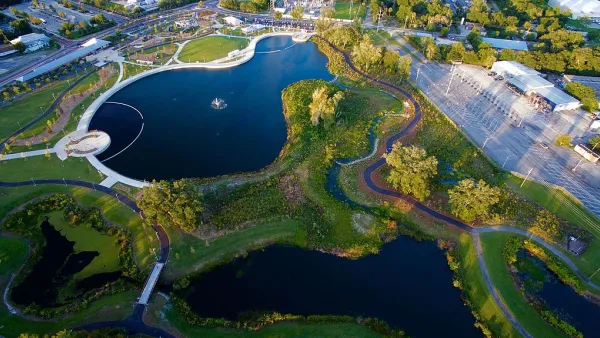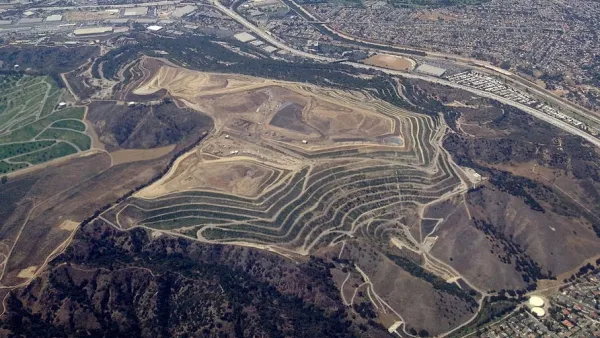A heavily contaminated site formerly used for chemical storage in East London provides an expensive lesson in urban brownfield remediation for government officials preparing the city for the upcoming 2012 Olympic Games.
As construction continues on the London Olympic Stadium, the centerpiece of the 2012 Summer Olympic Games, so do a variety of innovative efforts to clean up extensive pollution underneath the stadium stemming from a significant amount of toxic industrial solvents in the groundwater and bedrock below. According to officials from the Environment Agency, the chemicals are believed to have been leached from a storage facility that formerly occupied the site. The facility, which was owned by Banner Chemicals Group, has now been bulldozed to make way for the stadium but the pollution below is so severe that the remediation process will continue long after the Games are over.
" 'We thought that this would be a dirty site but it turned out to be much worse than we expected, grossly contaminated,' said Stuart Hayes, a hydrogeologist at the Environment Agency who is overseeing the clean-up operation. So far, only the topsoil has been cleaned. The next and much more difficult stage is to clean up the deeper pollution, said Hayes."
FULL STORY: Toxic waste clean-up on Olympic site cost taxpayers £12.7m

National Parks Layoffs Will Cause Communities to Lose Billions
Thousands of essential park workers were laid off this week, just before the busy spring break season.

Retro-silient?: America’s First “Eco-burb,” The Woodlands Turns 50
A master-planned community north of Houston offers lessons on green infrastructure and resilient design, but falls short of its founder’s lofty affordability and walkability goals.

Delivering for America Plan Will Downgrade Mail Service in at Least 49.5 Percent of Zip Codes
Republican and Democrat lawmakers criticize the plan for its disproportionate negative impact on rural communities.

Test News Post 1
This is a summary

Test News Headline 46
Test for the image on the front page.

Balancing Bombs and Butterflies: How the National Guard Protects a Rare Species
The National Guard at Fort Indiantown Gap uses GIS technology and land management strategies to balance military training with conservation efforts, ensuring the survival of the rare eastern regal fritillary butterfly.
Urban Design for Planners 1: Software Tools
This six-course series explores essential urban design concepts using open source software and equips planners with the tools they need to participate fully in the urban design process.
Planning for Universal Design
Learn the tools for implementing Universal Design in planning regulations.
EMC Planning Group, Inc.
Planetizen
Planetizen
Mpact (formerly Rail~Volution)
Great Falls Development Authority, Inc.
HUDs Office of Policy Development and Research
NYU Wagner Graduate School of Public Service





























